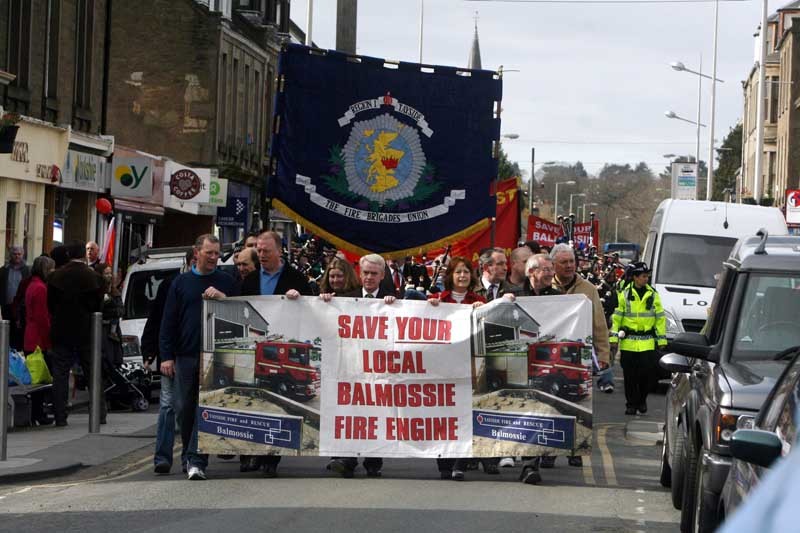A spending watchdog has criticised councillors for failing to back the downgrading of a Tayside fire station.
The Accounts Commission said members of the Tayside Fire and Rescue board had ignored ”compelling evidence” and had failed to live up to their responsibility to look after public funds.
The row over the Balmossie station in eastern Dundee was one of the most bitter in the service’s history. It pitted Chief Fire Officer Stephen Hunter against the Fire Brigades’ Union, attracted claim and counter-claim by politicians and prompted thousands of people to sign protest petitions.
Twice the board considered Mr Hunter’s plan to change the night-time crewing of the station from wholetime to retained personnel, switching the wholetime crew to Forfar where managers felt there was a higher fire risk.
Official figures disputed by the FBU showed Balmossie dealt with very few overnight blazes.
The Accounts Commission carried out a review of the fire service to see if it was delivering best value. As part of this it considered the Balmossie situation and its report said: ”This proposal would have better aligned £500,000 of resources to risk. A range of views on the matter were received as part of the consultation process, the vast majority of which were from members of the FBU who were strongly opposed to the proposal.”
The board decided to reject the scheme, although its then convener Ken Lyall sided with Mr Hunter. Mr Lyall fell foul of party colleagues over his stance and was suspended from the SNP group on Perth and Kinross Council. He later quit politics, saying he had become disillusioned, and moved with his family to Tasmania (link).
The commission’s report said: ”Elected members represent the views and needs of the community and are not obliged to automatically follow the advice of officers. However, they need to balance local concerns with wider corporate and regional considerations.
”Given their endorsement and promotion of the principles of integrated risk management planning and the compelling evidence to shift resources to better match the needs of Tayside as a whole, it is difficult to see that in its decisions over Balmossie the board has met its best value responsibilities in its use of public resources.”
Ministers plan to combine all eight Scottish fire services into a national body, but until then the commission wants the 18 councillors on the board to up their game.
John Baillie, commission chairman, said councillors on the fire board ”need to do more to scrutinise and challenge the service’s performance and help shape its strategy and use of resources.”’Issue will be looked at again’The current board convener, Perth councillor Bob Band, said: ”That’s a historic reference to Balmossie and things have moved on.”
With the national plans, he added: ”I have little doubt that the issue will be looked at again.”
Mr Band noted there had been a complaint that the service was not bench-marking itself against other brigades. He felt this was unfair as Tayside was doing some things that the others were not, such as its very high level of home fire safety visits.
”There is no doubt it is outperforming other services,” he said. ”I think some of the criticism is unjust. If there are concerns about members not asking enough questions that it because the information we receive in reports is very comprehensive.”
